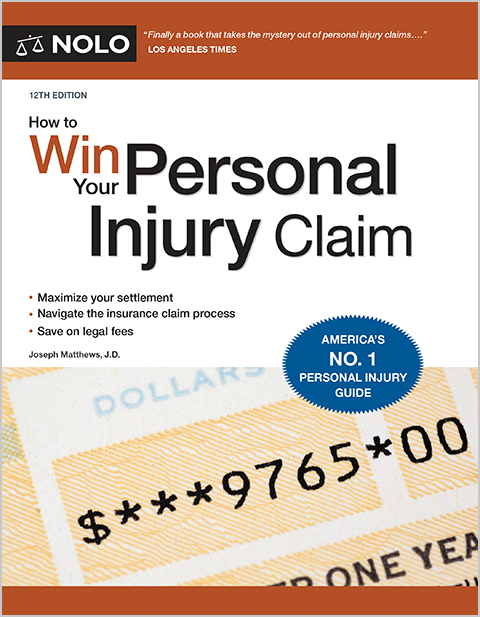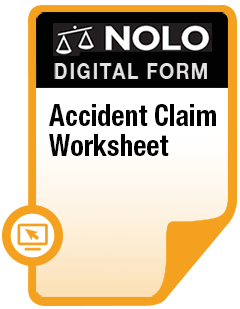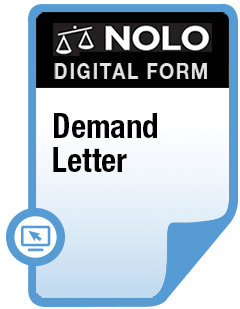A café or other business might be legally responsible when a customer is burned by hot coffee or tea, but these injury cases are tough to prove.
When it comes to to-go beverages like coffee, tea, or even hot chocolate, what happens when an unsecured lid or other employee mistake causes a customer to suffer burn injuries? And from a product safety standpoint, how hot is too hot before the risk of severe burn injuries becomes unacceptable in the eyes of the law?
A recent $50 million court award to a food delivery driver—who suffered serious burns from spilled hot tea at a Starbucks drive-through window—has many readers asking these questions and more. Let's look at the legal landscape and the legitimacy of personal injury lawsuits over burns caused by hot beverages.
- The 2025 Starbucks Hot Tea Lawsuit
- How Common Are Hot Beverage Burn Injury Lawsuits?
- The 1994 McDonald's Hot Coffee Verdict
- How Do I Prove a Hot Beverage Burn Injury Case?
- Why It's Hard to Win a Hot Coffee Injury Lawsuit
- How Long Do I Have to Sue Over a Hot Beverage Burn Injury?
- Should I Talk to a Lawyer About a Hot Beverage Lawsuit?
The 2025 Starbucks Hot Tea Lawsuit
In 2020, delivery driver Michael Garcia was severely burned by hot tea while picking up an order at a Los Angeles-area Starbucks drive-through. The burn injuries were so extensive that Garcia underwent multiple skin grafts and several additional medical procedures. Video footage of the incident captures the moment when a Starbucks employee passes a tray containing three beverage cups through the drive through window to Garcia, who is waiting in his car. He's clearly shown writhing in pain in the driver's seat after the tray is handed off.
What Was the Legal Argument in the Starbucks Tea Lawsuit?
Garcia suffered third-degree burns to his thighs, groin, and penis, according to his personal injury lawyers, who argued that the Starbucks employee acted without appropriate care in safely handing off the beverages to Garcia.
Specifically, the lawsuit claimed that the barista was negligent in failing to properly secure one of the hot teas in the beverage carrier, so that the cup was allowed to slip off of the carrier and spill into Garcia's lap. The burns resulted in severe pain, disfigurement, sexual dysfunction, and psychological harm, according to the lawsuit.
When the case went to trial in March 2025, the California jury agreed with Garcia's lawyers, awarding $50 million in damages to the 30-year-old.
In June 2025, a judge turned away two legal maneuvers by Starbucks:
- rejecting the company's request for a new trial, along with the argument that Garcia was partially at fault for his own injuries, and
- refusing to deem the $50 million verdict "excessive," based in part on the "horrific injuries and permanent residual physical and psychological consequences" Garcia faces.
Starbucks will almost certainly continue fighting the verdict on appeal.
How Common Are Hot Beverage Burn Injury Lawsuits?
Cases like these aren't as rare as you might think. It's common sense that coffee, tea, and other hot beverages pose a burn risk if they're not handled in a safe way. And, of course, customers have a responsibility to act with reasonable care when handling their own hot beverage purchases. But it's also true that all kinds of businesses that sell these products—from cafés and delis to fast food restaurants—owe certain legal duties to their customers when it comes to preparing and handing off hot beverages.
More on these legal duties later. For now, let's look at the most famous (or infamous) of these kinds of cases.
The 1994 McDonald's Hot Coffee Verdict
In 1992, Stella Liebeck, a 79-year-old New Mexico woman, spilled McDonald's coffee in her lap and suffered serious burns. She eventually sued the fast food chain, and in 1994 a jury awarded her nearly $3 million (the award was later reduced to around $500,000).
The case grabbed plenty of headlines at the time, and many people still have strong feelings about the decision. Some might not be familiar with all of the surrounding facts. Most notably:
- Ms. Liebeck was in the passenger seat of a parked car, removing the lid of her just-purchased coffee in order to add cream and sugar, when the spill occurred. She wasn't driving, as many people assumed.
- Ms. Liebeck's attorneys didn't argue that the spill was the fault of McDonald's. In fact, the jury found that Ms. Liebeck was partially to blame for her own injuries, and they reduced the amount of compensation they awarded her accordingly, in line with New Mexico's "comparative negligence" rules.
- Ms. Liebeck's case hinged on the argument that the McDonald's coffee was brewed and served at such a high temperature that it caused Ms. Liebeck to suffer unusually severe burns. This argument was ultimately successful, at least in the all-important eyes of the jury.
- Several expert witnesses testified that McDonald's guidelines on appropriate coffee temperature presented an "unacceptable" risk of harm to customers.
- Before Ms. Liebeck's case, McDonald's had received hundreds of reports of similar severe burn injuries, and had even paid out injury settlements in a number of instances.
- Before suing, Ms. Liebeck asked McDonald's for only $20,000 in settlement, to cover the cost of her medical bills and other out-of-pocket losses. The fast food giant refused to offer her more than $800. Only then did she take the company to court.
How Do I Prove a Hot Beverage Burn Injury Case?
With the Starbucks and McDonald's cases as guideposts, let's dive into what you'll need to establish in order to win a lawsuit over burn injuries caused by a hot beverage. The specifics depend on the theory of fault (or liability) you'll be relying on. The two most common arguments in these kinds of cases are:
- someone was negligent (careless) in handling the coffee (that's the crux of the Starbucks case), or
- the coffee itself was unreasonably dangerous under product liability rules (as in the McDonald's case).
Negligence and Hot Beverage Burn Injuries
Businesses and their employees owe a number of legal duties to customers, including the obligation to act with a reasonable amount of care in serving food and beverages. When it comes to hot to-go beverages, these duties can include:
- making sure lids are properly secured to the tops of cups
- ensuring that cups are snugly in place in beverage trays and other carriers, and
- handing hot beverages off to customers in a safe manner.
If an employee fails to act with reasonable care in carrying out these and other duties, and a customer is injured as a result, there might be a case for negligence. And if it's shown that the employee was negligent in securing or serving a hot beverage, and that carelessness was the cause of the customer's injuries, then under a legal concept called "vicarious liability," the employer becomes responsible too (as in the Starbucks case). Learn more about an employer's liability for employees' actions.
It's important to point out that this negligence theory of liability doesn't involve any consideration of:
- whether the beverage was too hot when it was served
- whether the cups or lids used by the business were defective, or
- anything else other than the employee's carelessness in securing the beverage before handing it off to the customer.
A big factor in the 2025 Starbucks verdict was likely the powerful video footage of the incident, which let jurors see the clear visual of a Starbucks employee passing a beverage tray to Garcia through the drive-thru window, one of the cups come loose from the tray, and Garcia twisting in pain as the hot beverage scalds him. It's pretty clear from this footage that the barista failed to properly secure one of the cups in the tray.
Product Liability and Hot Beverage Lawsuits
"Product liability" is an area of the law that holds manufacturers and others responsible for injuries caused by dangerous or unreasonably unsafe products. In the context of a hot beverage injury lawsuit, the argument here is that the beverage was prepared and served at such a high temperature that, as a product, the coffee became unreasonably unsafe for use by consumers. So, the seller now has legal responsibility for any injuries resulting from the unreasonable danger posed by the coffee.
You'd probably assume that spilling coffee on yourself would result in burn injuries and a significant amount of pain. But you probably wouldn't assume that spilling coffee on yourself would result in third-degree burns, that treatment for those burns would require skin grafting, and that you'd experience long-term (maybe even permanent) scarring. This is the narrative that was raised (and was ultimately successful) in the McDonald's hot coffee lawsuit.
Remember, the big factors in that case were evidence showing that:
- McDonald's knew its coffee was served at a temperature that made serious burns very possible in the event of a spill
- expert witnesses testified about the unacceptable risk posed by the temperature of the coffee, and
- the company had received hundreds of reports of customers suffering significant burn injuries from spilled coffee.
Learn more about proving a product liability claim.
Why It's Hard to Win a Hot Coffee Injury Lawsuit
Everyone knows that freshly-brewed coffee and steeping tea can be extremely hot. Juries know it too. If you're thinking about moving forward with this kind of case, not only will you need to be able to prove all aspects of your legal claims, you'll also need to anticipate the arguments likely to be raised by the business you're suing, and come up with a strategy for fighting back.
Let's just focus on the argument that the lid of a to-go beverage wasn't properly secured to the cup when it was handed to you by a café employee. This raises a number of questions:
- Was the café barista the last person to touch the lid before it came off during the spill, as you claim?
- Did you remove the lid yourself inside the café, so you could add cream and sugar to your coffee, then fail to properly re-attach the lid to the cup before you left?
- Did you do something after you left the café, or even when you were inside your car, that might have dislodged the lid (maybe you bumped the lid against the steering wheel)?
- What if you drove away with the cup between your legs? Was that a reasonable thing to do under the circumstances?
- Why didn't you use the cupholder that's right there between the driver and passenger seats?
Was the Customer At Fault for the Spill?
Many of the questions listed above will be asked in an attempt to show that it was your own negligence (and not any other factor) that caused the spill. Learn more about how your own fault affects your injury claim.
This is another factor that was in Michael Garcia's favor in the 2025 Starbucks hot tea case, despite the company's attempt to pin part of the blame on him in its request for a new trial (which was denied).
Garcia is handed the tray of beverages, and one of them seems to immediately spill on him, before he has a chance to secure the tray in a reasonable way. None of the questions in the list above could legitimately be raised by Starbucks in the face of this video evidence. Instead, the footage illustrates the extremely brief amount of time that lapsed between the employee's passing of the tray to Garcia, and the nearly-instantaneous occurrence of the spill. There's no reasonable argument that Garcia did something wrong in that short stretch of time.
In contrast, let's say you stop by your neighborhood coffee shop, buy your usual to-go coffee, and return to your car in the parking lot. As you settle into the driver's seat, and before you even have a chance to secure the coffee in the center console's cup holder, the lid pops off and hot coffee spills all over your lap. There's no video footage of the incident, and there are no witnesses who might have seen what happened. Now it's an uphill battle to try proving your case, and to convince a jury to see things your way.
How Long Do I Have to Sue Over a Hot Beverage Burn Injury?
Whatever legal argument you're going to use in your case (negligence, product liability, or any other kind of claim), one of your first concerns is the statute of limitations that will apply to any lawsuit you file. This is a law that sets a time limit on your right to bring a case to court. Different deadlines apply to different kinds of cases.
Under most state personal injury laws, the statute of limitations that applies to a lawsuit over negligence is the same as the one that will cover a product liability case, but in some states these claims have their own separate deadlines. Whichever deadline applies, the lawsuit-filing time limit typically ranges from two to four years, with some states giving you less time, and others giving you more.
What Happens If You Miss the Statute of Limitations Deadline?
If you try to file your hot beverage burn injury lawsuit after the statute of limitations deadline has already passed, the court is certain to refuse to hear your case, unless a rare exception applies to extend the deadline. If your case is thrown out, you'll have lost your right to any legal remedy for your harm, no matter how badly you were hurt or how clear it is that the business you're trying to sue was at fault for what happened to you.
This is why it's crucial to understand and comply with the statute of limitations as it applies to your potential burn injury lawsuit. You also want to keep the statute of limitations in mind when you're trying to negotiate an out-of-court settlement over a hot beverage injury claim. Make sure you leave yourself plenty of time to take things to court (or credibly threaten to do so), or you'll lose all of your negotiation leverage.
Should I Talk to a Lawyer About a Hot Beverage Lawsuit?
If you've read this far and you're convinced you have a pretty good case against the business that sold you a hot beverage that ended up burning you, an attorney's help can be critical.
First, an initial consultation with a personal injury lawyer will probably tell you a lot about your chances of success if you decide to sue. An attorney can take a thorough look at every aspect of your case—from how the burn injury happened to the available evidence—can evaluate the strengths of your case and the challenges you're likely to face, and will offer an objective opinion on whether it actually makes sense to take legal action over what happened.
Second, if you do decide to move forward with a lawsuit over injuries caused by a hot beverage, this isn't the kind of legal action you want to try handling on your own. Proving your case will likely require analysis and presentation of complex evidence, usually with the assistance of qualified experts. You may also be going up against a company that has high-powered legal defense teams and seemingly-endless resources at its disposal. There's no substitute for having a skilled legal professional on your side in cases like these.
Learn more about getting help from a personal injury lawyer.
Talk to a Lawyer
Need a lawyer? Start here.
How it Works
- Briefly tell us about your case
- Provide your contact information
- Choose attorneys to contact you
- The 2025 Starbucks Hot Tea Lawsuit
- How Common Are Hot Beverage Burn Injury Lawsuits?
- The 1994 McDonald's Hot Coffee Verdict
- How Do I Prove a Hot Beverage Burn Injury Case?
- Why It's Hard to Win a Hot Coffee Injury Lawsuit
- How Long Do I Have to Sue Over a Hot Beverage Burn Injury?
- Should I Talk to a Lawyer About a Hot Beverage Lawsuit?
- Briefly tell us about your case
- Provide your contact information
- Choose attorneys to contact you


